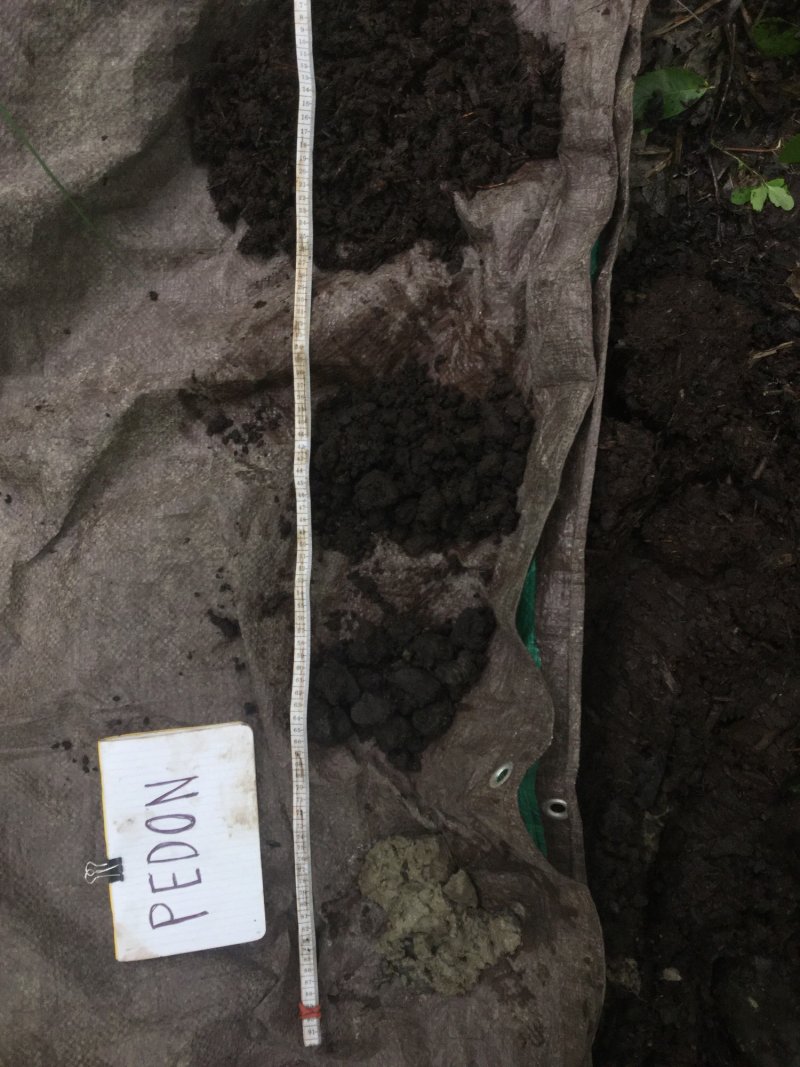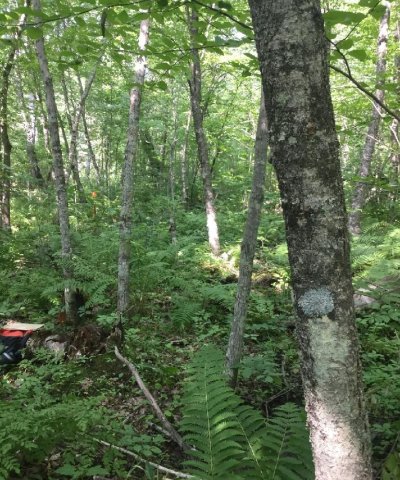
Natural Resources
Conservation Service
Ecological site F091XY002WI
Mucky Swamp
Last updated: 9/27/2023
Accessed: 12/18/2025
General information
Provisional. A provisional ecological site description has undergone quality control and quality assurance review. It contains a working state and transition model and enough information to identify the ecological site.
MLRA notes
Major Land Resource Area (MLRA): 091X–Wisconsin and Minnesota Sandy Outwash
The Wisconsin and Minnesota Sandy Outwash MLRA is the most extensive glacial outwash system in the northern half of Wisconsin. The total land area of the Wisconsin portion is just under 1.4 million acres (2,170 sq miles). The northern half is a former spillway for Glacial Lake Duluth. The flowing meltwater from the draining lake has left behind thick deposits of drift and carved a terraced river valley now occupied by the St. Croix and Bois Brule Rivers.
The northeastern section – the Bayfield hills – is a collapsed outwash plain where drift deposits are thick. Lacustrine materials from Glacial Lake Duluth line the northeastern tip. Moving southwest, the landscape transitions into a large pitted outwash plain. This is an area of extensive kettle holes, and, where the underlying till is less permeable, kettle lakes with some interspersed morainic hills and ridges. The glacial drift deposits are thinner in the southwestern section, although there is still no documented surface bedrock within this MLRA.
The St. Croix and Bois Brule rivers share a channel that lines much of the northwestern border of this MLRA. In some places, the underlying reddish-brown sandy loam till of the Copper Falls Formation is exposed along cut riverbanks, though most of it is covered by a mantle of outwash. Glacial lakes deposited pockets of fine-textured lacustrine materials, most of which were washed away or buried by glacial outwash and meltwater flowing through the channel. East of the channel, some of the silty and clayey lakebed deposits are found near the surface, where they impede drainage and contribute to the formation of extensive wetlands.
Historically, the area supported extensive jack pine (Pinus banksiana), scrub, and oak forests and barrens. The northern portion also supported stands of red pine (Pinus resinosa) and eastern white pine (Pinus strobus) as well. Marsh and sedge meadow, wet prairies, and lowland shrubs dominated the extensive wetland complexes in the southern tip of this MLRA (Finley, R., 1976).
Classification relationships
Relationship to Established Framework and Classification Systems:
Biophysical Settings (Landfire, 2014): This ES is largely mapped as Laurentian-Acadian Herbaceous Wetlands, Boreal White Spruce-Fir Forest, Central Interior and Appalachian Herbaceous Wetlands, Boreal White Spruce-Fir Forest, Laurentian Pine Barrens, and Laurentian-Acadian Northern Hardwoods Forest
Wetland Forest Habitat Type Classification System for Northern Wisconsin (Kotar and Burger, 2017): The sites of this ES keyed out to three habitat types: Fraxinus nigra/Onoclea (FnOn); Thuja-Abies balsamea- Fraxinus nigra/Ilex (ThAbFnIx); Fraxinus nigra-Abies balsamea/Impatiens (FnAbI)
WDNR Natural Communities (WDNR, 2015): This ES is most similar to Northern Hardwood Swamp described by the WDNR, but may coincide with and overlap some of the WDNR wetland communities in different states depending on past hydrology.
Hierarchical Framework Relationships:
Major Land Resource Area (MLRA): Wisconsin and Minnesota Sandy Outwash (91X)
USFS Subregions: Bayfield Sand Plains (212Ka), Mille Lacs Upland (212Kb)
Wisconsin DNR Ecological Landscapes: Northwest Sands, Northwest Lowlands
Ecological site concept
The Mucky Swamps ecological site is located throughout MLRA 91X in depressions and drainageways on lake, outwash, and till plains. These sites are characterized by very deep, very poorly drained soils formed in highly decomposed organic material primarily of herbaceous origin. In contrast to Peat Bog ecological sites, sphagnum moss typically is not present. On sites where it does occur, the live and dead moss thickness ranges only from 6 to 12 inches. The rest of the organic soil material is black muck. These sites are subject to frequent flooding and ponding during the spring and fall. Sites remain saturated throughout the growing season and meet hydric soil requirements. Precipitation, runoff from adjacent uplands, groundwater discharge, and stream inflow are the primary sources of water. Soils range from very strongly acid to slightly alkaline.
The vegetation does not appear to change fundamentally across this site with changes in the thickness of the organic soil material, until an aerated root zone reaches the mineral soil horizons. This condition crosses a boundary to a different ecological site. The water table periodically drops low enough and for long enough time periods, to allow for moderately productive forest growth. Most commonly present tree species range from elms, (Ulmus spp.), black ash (Fraxinus nigra), red maple (Acer rubrum) and paper birch (Betula papyrifera), on the more productive segments of the Site, to balsam fir (Abies balsamea), northern white cedar (Thuja occidentalis), tamarack (Larix laricina), black spruce (Picea mariana), and white pine (Pinus strobus), in locations with lower nutrient availability
Mucky Swamps sites receive significantly more groundwater and stream inflow than their Poor Fens counterpart. In addition, adjacent upland sites may be comprised of finer, more calcareous parent materials and the runoff and groundwater Mucky Swamps receives from these sites may buffer their acidity. They have improved growing conditions over Poor Fens.
Associated sites
| F091XY005WI |
Wet Sandy and Loamy Lowland These sites occur on depressions and drainageways on outwash plains and lake plains. They primarily form in sandy outwash are subject to some ponding and flooding. Soils are very deep and poorly or very poorly drained. They are saturated for much of the year. They may be adjacent to Mucky Swamps. They occur higher on the drainage sequence and are slightly drier. |
|---|---|
| F091XY007WI |
Moist Sandy and Loamy Lowland These soils formed in sandy outwash, sandy lacustrine deposits, sandy eolian deposits, or loess that is sometimes underlain by sandy or loamy till. Soils are very deep and somewhat poorly drained. They occur higher on the drainage sequence and are drier than Mucky Swamps. |
| F091XY011WI |
Sandy Upland These soils formed primarily in sandy outwash or sandy eolian deposits, but some sites formed in sandy lacustrine or loamy alluvium underlain by sandy outwash. Soils are very deep and are moderately well to somewhat excessively drained. They are neutral to extremely acid and lack a spodic horizon. They occur higher on the drainage sequence and are much drier than Mucky Swamps. |
| F091XY012WI |
Loamy Upland These soils formed in loamy lacustrine, loamy alluvium, loamy till, sandy outwash, sandy eolian, or loess deposits. Some sites have underlying lacustrine deposits, till, or basalt bedrock. They are moderately well or well drained. They occur higher on the drainage sequence and are much drier than Mucky Swamps. |
| F091XY015WI |
Dry Upland These sites formed in sandy outwash or eolian deposits. Soils are very deep, excessively drained, and lack a spodic horizon. They occur higher on the drainage sequence and are much drier than Mucky Swamps. |
Similar sites
| F091XY005WI |
Wet Sandy and Loamy Lowland These sites occur on depressions and drainageways on outwash plains and lake plains. They primarily form in sandy outwash are subject to some ponding and flooding. Soils are very deep and poorly or very poorly drained. They are saturated for much of the year but are still drier than Mucky Swamp sites. They may be adjacent to Organic Lowlands. The vegetative communities supported by Wet Sandy And Loamy Lowlands are sometimes similar to those of Mucky Swamps. |
|---|---|
| F091XY001WI |
Poor Fen Like Mucky Swamps, Poor Fens consist of deep organic deposits from primarily herbaceous origin. These sites are also wetlands. They are poorly or very poorly drained and are strongly to extremely acid. They receive less groundwater than Poor Fens and are therefore more acidic and have lesser growing conditions that Mucky Swamps. |
| F091XY003WI |
Floodplain These sites occur in depressions and flats on floodplains. They form in sandy to silty alluvium and are somewhat poorly to very poorly drained. They are subject to flooding. The vegetative communities supported by Floodplains are sometimes similar to those of Mucky Swamps. |
Table 1. Dominant plant species
| Tree |
(1) Ulmus |
|---|---|
| Shrub |
(1) Larix laricina |
| Herbaceous |
Not specified |
Click on box and path labels to scroll to the respective text.
Ecosystem states
State 1 submodel, plant communities
| 1.1A | - | Large-scale canopy disturbance, mortality in canopy layer. |
|---|---|---|
| 1.1B | - | Large-scale natural disturbance or tree harvesting, causing swamping of the site. |
| 1.2A | - | Slow accumulation of living and dead sphagnum moss layer. |
| 1.2B | - | Large-scale natural disturbance or tree harvesting, causing swamping of the site. |
| 1.3A | - | Colonization by trees with tolerance for prolonged ponding. |


